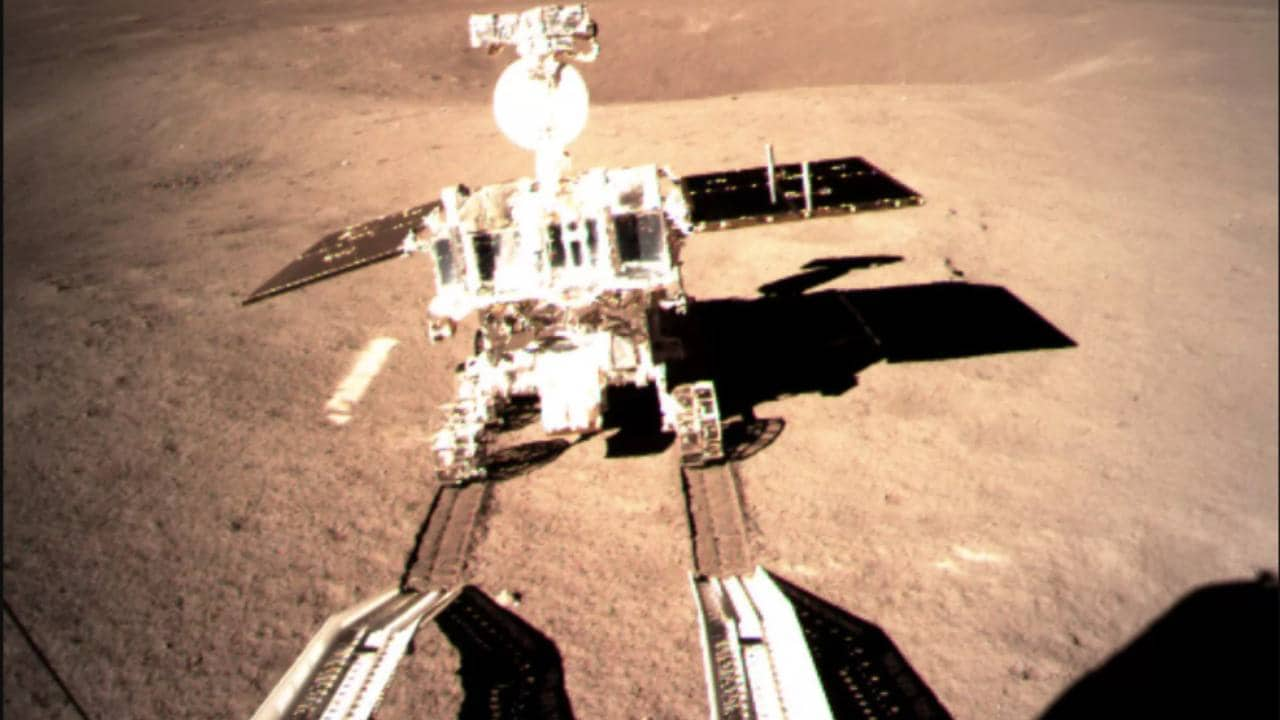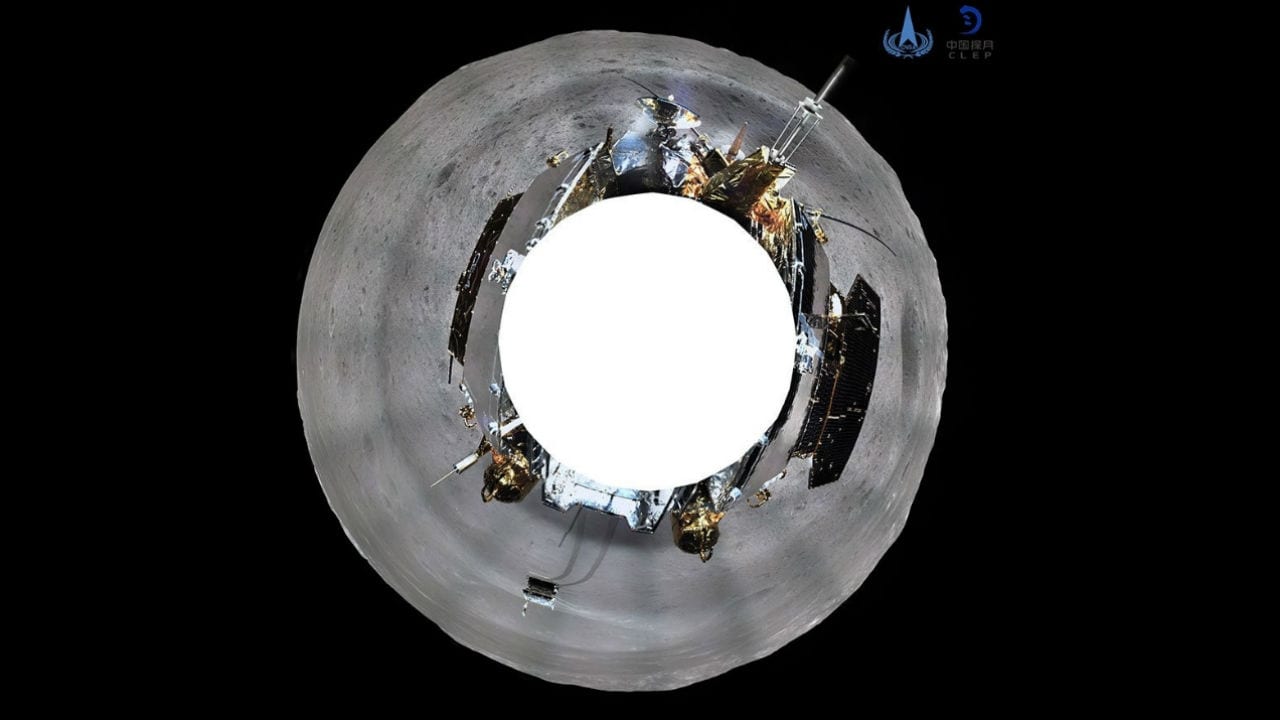After a two-week siesta during the first extremely cold night on the moon, China’s Chang’e-4 rover and lander have been awakened by sunlight, the China National Space Administration announced. The
Chang’e-4 probe
awoke from its hibernation to temperatures on colder than ever recorded before — negative 190 degrees, the space agency said. The temperature readings were “colder than scientists expected,” CNSA
told
Xinhua news. The night-time temperature was recorded by the probe after it turned on following its long slumber, on Wednesday. “That’s probably due to the difference in lunar soil composition between the two sides of the moon,” Zhang He, director of the Chang’e-4 mission,
told
Xinhua news. [caption id=“attachment_5839701” align=“alignnone” width=“1280”] China’s Jade Rabbit-2 rover makes its first wheel tracks on the far side of the moon on 3 January 2019, after rolling down from the Chang’e 4 lander. Image courtesy: CNSA[/caption] Named after a Chinese moon goddess, the
Chang’e-4 spacecraft
made the
first ever successful soft landing
on the far side of the moon on 3 January. This is a big step towards China’s
plans to grow as a superpower
in space. The rover released from the probe — called Yutu-2 or Jade Rabbit-2, after the moon goddess Chang’e_’_s pet — also got back on 29 January to studying the Von Karman Crater in the South Pole-Aitken Basin, the landing site of the spacecraft, the
statement said
. Currently, the rover is about 18 meters northwest of the lander and communicating with ground control and the Chang’e-4 probe via a relay satellite called Queqiao, which is in a stable orbit between the Earth and Moon. The Chang’e-4 mission has instruments developed by Swedish, German as well as Chinese scientists
to study different aspects
of the moon. The lunar environment, radiation and effects of solar wind on the moon’s surface are some of the key objectives. [caption id=“attachment_5879221” align=“alignnone” width=“1280”]
China’s Jade Rabbit-2 rover makes its first wheel tracks on the far side of the moon on 3 January 2019, after rolling down from the Chang’e 4 lander. Image courtesy: CNSA[/caption] Named after a Chinese moon goddess, the
Chang’e-4 spacecraft
made the
first ever successful soft landing
on the far side of the moon on 3 January. This is a big step towards China’s
plans to grow as a superpower
in space. The rover released from the probe — called Yutu-2 or Jade Rabbit-2, after the moon goddess Chang’e_’_s pet — also got back on 29 January to studying the Von Karman Crater in the South Pole-Aitken Basin, the landing site of the spacecraft, the
statement said
. Currently, the rover is about 18 meters northwest of the lander and communicating with ground control and the Chang’e-4 probe via a relay satellite called Queqiao, which is in a stable orbit between the Earth and Moon. The Chang’e-4 mission has instruments developed by Swedish, German as well as Chinese scientists
to study different aspects
of the moon. The lunar environment, radiation and effects of solar wind on the moon’s surface are some of the key objectives. [caption id=“attachment_5879221” align=“alignnone” width=“1280”] The first 360º panoramic images from Chang’e-4. Image: Twitter/CNSA[/caption] Instruments on China’s previous moon mission Chang’e-3, back in 2013, survived all of 60 lunar nights and continue to be in operation, Xinhua said
. During the first lunar day, the lander and the rover photographed each other, and a camera installed on the top of the lander took 360-degree panoramic photos on the surrounding of the probe. “From the panorama, we could see the probe was surrounded by many small craters. It was really thrilling,” said Li Chunlai, deputy director of the National Astronomical Observatories of China and commander-in-chief of the ground application system of Chang’e-4. What this also means is that in the near future,
rover Yutu-2
is up against testing terrain, said scientists. With inputs from AFP
The first 360º panoramic images from Chang’e-4. Image: Twitter/CNSA[/caption] Instruments on China’s previous moon mission Chang’e-3, back in 2013, survived all of 60 lunar nights and continue to be in operation, Xinhua said
. During the first lunar day, the lander and the rover photographed each other, and a camera installed on the top of the lander took 360-degree panoramic photos on the surrounding of the probe. “From the panorama, we could see the probe was surrounded by many small craters. It was really thrilling,” said Li Chunlai, deputy director of the National Astronomical Observatories of China and commander-in-chief of the ground application system of Chang’e-4. What this also means is that in the near future,
rover Yutu-2
is up against testing terrain, said scientists. With inputs from AFP
Chang'e-4 probe, rover survive first lunar night, wake up to record-low temperature
tech2 News Staff
• February 4, 2019, 17:39:48 IST
Instruments on China’s Chang’e-3 moon mission survived 60 lunar nights & continue to be in operation.
Advertisement
)
End of Article